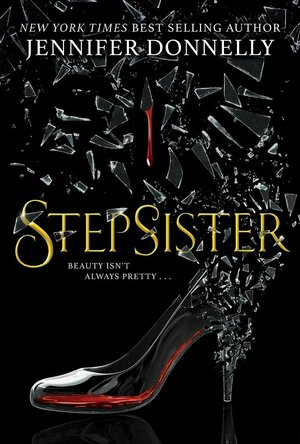
Athletics 2: Summer Sports
Games
App
Practice athletic sports in a realistic 3D environment through 30 events and 5 competitions ! ...

Athletics: Summer Sports (Full Version)
Games
App
Practice athletic sports in a realistic 3D environment through 30 events and 5 competitions ! ...

Outdoor Play Spaces for Children
Book
This detailed book examines key drivers in best play space designs. High-quality, integrated play...

hipages - hire a tradie, get it done
Lifestyle and Utilities
App
The easiest way to find a Tradie, Professional or Home Service than any other service! hipages has...

Rainwater Park: Stormwater Management and Utilization in Landscape Design
Book
Provides a definitive statement on stormwater management and rainwater recycling in urban park...

CentOS High Performance
Book
Create high availability clusters to enhance system performance using CentOS 7 About This Book *...

Area Distance Perimeter Measurement for Map on GPS
Navigation and Education
App
***A simple tool to measure Area, Perimeter and Distance on maps. It will allow you to measure any...

Family Locator Locategy
Lifestyle
App
Locategy is a family locator with parental control features: allows parents to locate their kid’s...

Measure Map Pro. By Global DPI
Utilities and Navigation
App
Now: 50% off. Measure Map Pro lets you quickly and easily measure multiple distances, perimeters...
Lottie disney bookworm (1056 KP) rated Stepsister in Books
Aug 16, 2019
Judging purely by the title of the book: the cynical side of me expected this to be a retelling of the traditional fairy tale from the viewpoint of the “ugly stepsisters”. Perhaps with a remorseful twist and a concluding reconciliation. I could not have been more wrong.
This is possibly the first time I should have judged a book by its cover: the iconic glass slipper casting fragmented shards across the jacket should have certainly forewarned me that this will not be just another Cinderella story.
Unlike the twisted tales and the villain series, Step Sister is, as far as I know, not connected to the Disney enterprise at all. This makes it an edgier read by far but also allows the novel to lean as far away from the traditional fairy tale as it dares: smashing just a couple of stereotypes along the way.
Oh, and just a quick point: the novel opens on Isabelle and Octavia disfiguring their own feet, at the command of their mother, with the aim to fit into the glass slipper and marry the Prince. See what I mean- edgy right?
Stepsister is told from the viewpoint of Isabelle: a headstrong girl with an ambitious mother, an intelligent sister Octavia and a kind, sweet sister, Ella. Isabelle is a disappointment to her mother: a plain girl who prefers riding and fencing to corsets and suitors. A number of flashbacks to the girls’ childhood also suggests that Isabelle, Octavia and Ella were once very close, leading the reader to wonder how the relationship became the poisonous one we are so familiar with.
Unsurprisingly, their Maman’s plan to mutilate her way to the palace does not succeed and Ella takes her rightful place by the Prince’s side, claiming her ‘happily ever after’. But what is to become of the family she leaves behind? Maimed and outcast, Isabelle and Octavia struggle to carry on once their actions are brought to light and they are promptly labelled the “ugly stepsisters” by all around them.
Desolate and lost, Isabelle mistakenly believes that her life would improve if she were more attractive and makes a wish to the fairy queen Tanaquill, who promises to grant her desire when Isabelle finds the three missing parts of her heart.
Thus, begins Isabelle’s mission to reclaim her heart and turn her life around. The stepsister’s road of discovery is a bumpy one however, and is not made any easier by an old crone named Fate and a young man named Chance, both of whom seem to have an unhealthy obsession with her progress and a strange, almost friendly rivalry over the possession of Isabelle’s life map.
Jennifer Donnelly introduces us to a number of characters throughout Isabelle’s journey, all of whom are exquisite: Chance is an eccentric debonair with an entourage that may have just stepped out of The Greatest Showman; Octavia is every nerdy, sarcastic girl’s dream and even Fate is strangely likeable. It is truly impressive how Donnelly can make us feel like we know these people within the space of 470 pages.
I was also impressed with how different Jennifer Donnelly’s characters are from everything I have read before. Even Tanaquill is not the fairy godmother we all know and love. She isn’t even the slightly bonkers Helena Bonham-Carter version! There isn’t a bibbidi bobbidi boo in sight for this talon-fingered shapeshifter and she certainly does not grant wishes easily.
As a result, the reader does not quite trust the fairy queen: there is always an aspect of her that seems evil. Alas, this is another stroke of genius by Donnelly: the fairy queen doesn’t look like Tinkerbell or the Blue Fairy and so we don’t trust her- even when she is helping Isabelle and why is that? Because of her appearance? Well that makes us just as bad as those who persecute Isabelle!
Ella features very little in the novel. This is not wholly unexpected: it is not her story after all. She is frequently referred to and heavily present in Isabelle’s evolution but, out of all the characters, we know Ella the least. This is not to say that Donnelly presents Ella as a 2D character in order to prevent us from preferring her to our feistier protagonist: in fact, Ella slowly reveals a darker side to her own tale. Simply put, she does not have the depth and human rawness that Isabelle has. Isabelle appeals to the insecure teenager in us all: never believing that she is good enough, focusing on her flaws and judging herself based on the opinions of others.
When Isabelle finally finds the pieces of her heart and has to literally fight to achieve her happy ending, she automatically looks to one of the male characters to lead. After all, it has always been instilled into her that she is “just a girl”. However, Chance and his entourage have educated Isabelle as to the potential of her sex and it is through this inspiration that Isabelle and the reader realise that the answer has been there all along: the answer is Isabelle. All the childhood flashbacks of riding and fighting have been breadcrumbs for the reader: Isabelle is a warrior- her life is not mapped out by Fate or Chance anymore; she can decide her own path.
Step Sister holds up a gigantic mirror to the way we judge beauty and shows us what it really means to be a girl. Jennifer Donnelly proves that being strong, brave and, most importantly, true to yourself is what makes you beautiful. In fact, it is not until Isabelle accepts herself that she is described as beautiful and, by standing up for what she believes in, everyone achieves their own happy endings. As a mum of two young boys I really appreciated how Octavia’s love of science and math and Felix’s creativity and love of art directly contrasted with Maman’s old-fashioned desire to “marry off” her daughters. This story is no fairy tale: it is real, it is edgy and it is telling all generations that life is what you make it.
